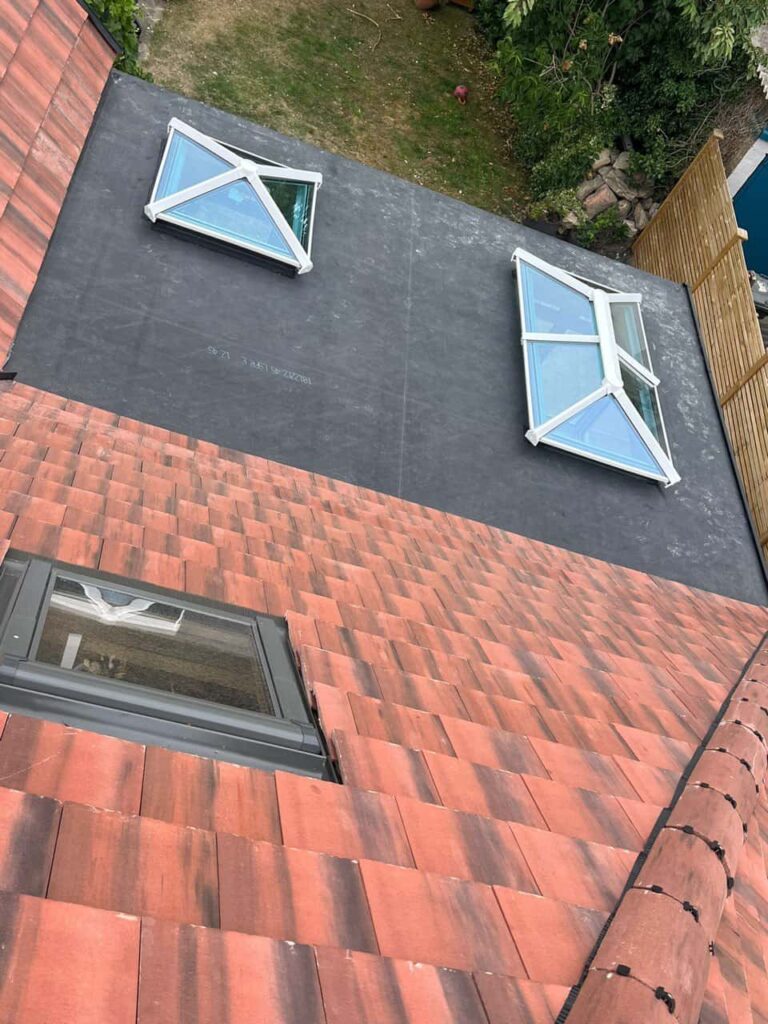A slipped roof tile may seem like a minor issue, but even a single loose tile can lead to significant water ingress, internal damage, and wider structural concerns if not dealt with promptly. The earlier a potential problem is identified, the easier it is to prevent further deterioration. At Nuneaton Roofing Repairs, we support homeowners across Nuneaton, Warwickshire by helping them understand the early warning signs of tile movement so issues can be tackled before they escalate.
Spotting a tile that’s about to slip is not difficult when you know what to look for. With a few simple checks, homeowners can keep their roofs safer and more secure all year round.
Visual Irregularities Along the Roofline
One of the quickest ways to identify a tile that’s about to slip is to stand back and look at the overall roofline. Tiles that are beginning to move often sit slightly out of alignment with the others. Warning signs include:
- A tile that appears lower than its neighbours
- Uneven spacing between tiles
- A tile that looks tilted or lifted
- A visible gap that should not be present
These small irregularities may seem harmless at first glance, but they often indicate that the tile’s fixing has weakened. Nuneaton Roofing Repairs frequently finds that early alignment issues are the first visual clue of an upcoming slip.
Gaps at the Leading Edge of the Tile
Tiles rely on hooks, nibs, or nails to stay securely fixed. As these fixings weaken due to weathering, natural ageing, or movement within the roof structure, the tile may begin to lift at the bottom edge. This creates a subtle gap that can allow wind to get underneath the tile and dislodge it completely.
Homeowners in Nuneaton, Warwickshire should pay particular attention to these lower-edge gaps, especially after strong winds or heavy rainfall.
Loose or Missing Mortar Around Ridges and Verges
Although the tile itself may not yet be slipping, the surrounding mortar can provide clues that movement is imminent. Mortar is commonly found around ridge tiles, verges, and junctions. When it begins to crumble, crack, or fall away, the tiles in these areas become more susceptible to displacement.
Nuneaton Roofing Repairs often identifies mortar failures as a key factor when diagnosing why tiles are starting to shift. Regular visual checks can help homeowners catch these issues early.
Debris Accumulation or Moss Growth Under Tiles
Moss and debris might seem harmless, but they can act as wedges that lift tiles slightly from their original position. When this happens, tiles no longer sit flat and can begin to loosen.
Signs to watch for include:
- Moss pushing the tile upwards
- Debris trapped beneath the tile edges
- Shading areas where tiles no longer rest flush
These issues can cause the tile to move bit by bit until it eventually slips. Homeowners in Nuneaton, Warwickshire should consider moss removal and maintenance to avoid unnecessary tile movement.
Noise During Windy Weather
If you hear clattering, rattling, or tapping noises from the roof during windy weather, this can be a strong indication that one or more tiles are loose. A secure tile will not move or vibrate in the wind, whereas a slipping tile may lift slightly and drop back into place repeatedly.
This early warning sign is often overlooked, but it is one of the most reliable indicators that roof attention is needed. Nuneaton Roofing Repairs commonly receives callouts from homeowners who noticed unusual roof noise before spotting visible movement.
Water Stains or Damp Patches Inside the Property
Internal signs can also indicate that a tile is slipping. If water is entering through a small gap created by a loose tile, you may notice:
- Damp areas in the loft
- Staining on ceilings or upper walls
- A musty smell in the attic
These internal symptoms often appear before the slipped tile becomes visible from the outside.
Weather Exposure and Ageing Fixings
Over time, tile fixings naturally degrade. Nails corrode, timber battens age, and tile nibs become weaker due to years of weathering. As this happens, tiles begin to lose the secure hold they once had.
In Nuneaton, Warwickshire—where roofs face rain, frost, and regular wind exposure—ageing becomes a major factor in tile movement. Regular inspections from Nuneaton Roofing Repairs help identify these early signs before a slip occurs.
The Importance of Early Detection
Identifying a tile that’s about to slip is far more beneficial than waiting until it fully dislodges. Early detection allows:
- Quicker, easier repairs
- Prevention of internal damage
- Reduced risk of further tile displacement
- Protection of roof underlay and structure
A small amount of movement can lead to far greater issues if ignored, making proactive checks essential.
Conclusion
The quickest way to spot a tile that’s about to slip is to look for early signs such as uneven alignment, edge gaps, loose mortar, moss build-up, unusual roof noise, or interior water staining. These subtle indications often reveal the problem long before the tile becomes a serious risk. With the expert support of Nuneaton Roofing Repairs, homeowners across Nuneaton, Warwickshire can maintain safe, secure roofs and prevent small issues from turning into major concerns.
Call us on: 02475424593
Click here to find out more about Nuneaton Roofing Repairs
Click here to complete our contact form and see how we can help with your roofing needs.

